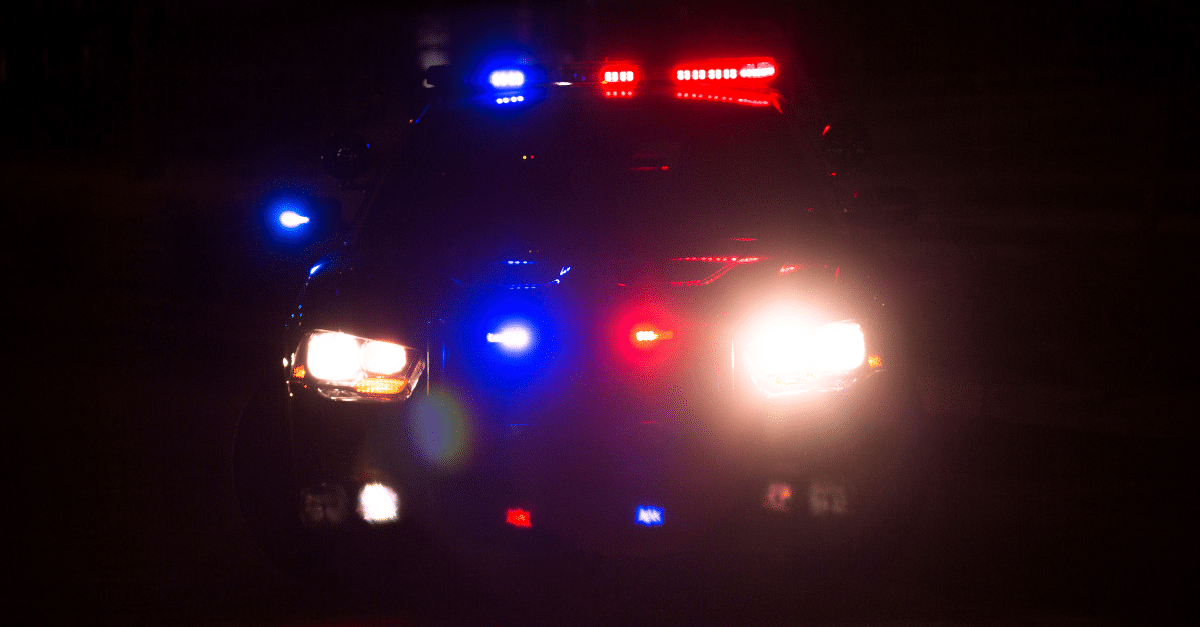R. v. Ominayak, 2025 ABKB 69
In R v. Ominayak, 2025 ABKB 69 [Ominayak], the Alberta Court of King’s Bench held the court was free to make an adverse inference about the lawfulness of an arrest where police deliberately fail to use body cameras. The Court went as far as to suggest that a failure to use body cameras during the execution of a warrant against a “high risk” individual in a private residence is “borderline negligence” and that budgetary reasons for failing to equip officers in this manner cannot supersede the public interest in transparency, and the safety of the police.
BACKGROUND
In Ominayak, the accused sought a stay of proceedings on the basis that on his arrest, the officers breached his s. 7 Charter right to life, liberty and security of the person by using excessive force.
During their briefing, the arresting officers were advised that the arrest would be a “high-risk” operation with a real possibility of violent resistance, weapons, and attempted evasion by the accused. On the day of the arrest, police attended the same residence multiple times in search of the accused. On one occasion, the accused avoided detection by crawling into the attic and covering himself in insulation. Later, police received a tip that the accused was hiding inside a couch. Police returned to the residence and located the accused.
It was undisputed that the police used significant force during the arrest, including use of a taser. However, the evidence of the arresting officers and the accused differed significantly. The accused’s evidence was that after he was extracted from the couch, he attempted to cooperate with the police, but the officers were violent toward him. The police officers’ evidence was that the accused was immediately combative and aggressive, and continued to resist arrest.
ANALYSIS
The case turned on credibility. The Court noted that if it accepted the accused’s evidence, the Charter breach would be made out. However, if it accepted the officers’ evidence, the arrest would be lawful with no excessive force made out.
Considering the extraordinary measures taken by the accused to hide from police and evade arrest, the Court found his version of events was not credible. The judge noted that the accused’s “entire day was devoted to actively evading arrest, regardless of how hopeless that evasion became…” and concluded it was unlikely he cooperated with the arresting officers.
Turning to the officers’ evidence, the judge accepted that each officer experienced, perceived, and recounted their involvement differently, noting that the Court would be “highly suspicious” about the truthfulness of the officers’ testimony had they had identical recollections of the incident. The judge considered the fact that the officers had been briefed on the “high-risk” nature of the operation, the fact that the accused was “highly motivated” to evade capture and did not signal any intention to surrender upon his discovery, and concluded the arrest was lawful.
However, the Court cautioned the police officers. In regard to one (unproven) allegation that an officer had kicked the accused in the head while he was restrained, the Court stated :
[30] …delivery of kicks to a person that is being restrained by other officers will rarely be acceptable and had I concluded that any of the kicks delivered by [the officer] contacted or even were directed at the head or neck of [the accused], a breach for excessive force would have undoubtedly been the result. A kick to the head of an unarmed person that is being held down, though not necessarily controlled, is vicious, dangerous and in almost all circumstances, illegal. [Emphasis added]
Finally, in light of the reliance on witness credibility, the Court expressed serious disappointment that body cameras were not employed during the arrest. Had they done so, there would have been “little room for doubt about how the arrest was effected”. The Court noted that body camera technology has been available for more then 20 years, and the fact that Canadian police forces “still choose not to equip their officers with body cameras in these types of situations is no longer tolerable”. The court went on to conclude:
[35] While I do not so in this case, it should be open to the Courts to make an adverse inference against the lawfulness of an arrest where the police deliberately fail to electronically record an arrest such as the one described here. The execution of a warrant on a high-risk individual where use of force is possible is precisely the circumstance that cries out for comprehensive video recording to occur, particularly when the manhunt is expected to happen in private residences; the failure to do so is border-line negligence. Budgetary or other cost-related reasons for failing to properly equip officers in this manner simply cannot supersede the necessity of providing the most fulsome, reliable and unbiased record of high-risk police interactions with members of the public. The availability of this technology and the need to protect members of the police and public from Judicial decisions that are based on less trustworthy and often infallible evidence should make its use mandatory, particularly in these high-risk circumstances. The safety of police officers and the public they serve demands it. [Emphasis added]
CONCLUSION
Ominayak should serve as a strong caution to police departments across Canada that courts are increasingly viewing the use of body cameras, particularly during “high-risk” operations, as mandatory. Faced with an absence of reliable footage from a body camera, courts may make an adverse finding regarding the lawfulness of an arrest, which could lead to a stay of criminal proceedings. In Ominayak, the Court held that the public interest in transparency, the safety of police officers and the public, and the protection against judicial decisions based on less trustworthy evidence, outweigh budgetary concerns over equipping officers with this technology.
R. v. Pietz, 2025 MBCA 5
In R v. Pietz, 2025 MBCA 5 [Pietz], the Manitoba Court of Appeal held that police were not required to provide an accused with a second opportunity to speak with counsel before driving him to a suspected crime scene for the purpose of eliciting a confession.
Background
In Pietz, the accused appealed his conviction of manslaughter on the basis that he should have been granted a stay of proceedings on the basis that the police breached his Charter right to be protected from arbitrary detention and his right to counsel.
In May 2019, approximately one year after the victim disappeared, police arrested the accused. Among other things, the police had evidence that on the night of the victim’s disappearance, the accused used the victim’s bank cards to withdraw money from several bank machines. Police were also able to review cellphone tower data, and discovered that on the evening of the disappearance, the accused had driven to Arborg, Manitoba. For these reasons, police suspected the accused had disposed of the victim’s body at or near that location.
On his arrest, the accused exercised his right to speak with counsel. After that consultation, police began an interview. At approximately 3:30 a.m., police took the accused for a drive to Arborg and continued to ask him questions during the drive. The drive was audio recorded. The accused did not have a jacket, and was wearing paper booties. When they got to the location where the police suspected the accused disposed of the body, they removed him from the vehicle and attempted to get him to show them where he disposed of the body. The temperature was between four and eight degrees, and the accused was not given shoes, a sweater, or any means to warm himself. They stood outside for approximately 18 minutes.
The issues on appeal was whether judge erred in failing to award a stay of proceedings on the basis that (1) the accused’s detention during the drive was arbitrary; and (2) the accused should have been given a second opportunity to speak with counsel before the drive.
Issue #1 – Was the decision to remove the accused from police headquarters lawful?
The accused argued that the police officers’ decision take him for a drive to Arborg amounted to an unlawful detention. The Court disagreed and concluded that the drive was part of the ongoing investigation and was undertaken for the purpose of obtaining a confession. However, the Court noted that the conduct of the police was “not flawless” and that they should have provided the accused with shoes and a means to stay warm and should not have used offensive language. However, the conduct did not render the detention arbitrary.
Issue #2 – Was the accused entitled to a second opportunity to speak with counsel?
The Court affirmed the principle that an accused is entitled to a second opportunity to speak with counsel if it becomes clear, as a result of changed circumstances or new developments, that the initial legal advice is no longer sufficient or correct. An accused right to a second consultation with counsel will arise only where there is a material change in his or her situation after the initial consultation, such as a non-routine procedure, a change in jeopardy, or there is reason to question the accused’s understanding of his or her right to counsel.
In this case, the accused argued that the drive to Arborg was a “non-routine procedure”. The Court held that a “non-routine procedure” is one that would not fall within the expectation of the advising lawyer at the time of the initial consultation. The Court considered the body of jurisprudence on this issue and observed that a “non-routine procedure” usually requires the accused’s participation to create or uncover evidence. For example, participation in a police line-up, a polygraph test, or a DNA swab.
In this case, the Court concluded that the drive was not a material change in circumstances. Rather, the Court concluded that the interview essentially continued during the drive. The officers continued to ask questions and use the same techniques to elicit a statement. The Court concluded that even if the accused were afforded a second opportunity to speak with counsel, it was clear the advice would have been the same. The accused could either answer the officers’ questions or remain silent. He chose to remain silent.
The Court held that there was no violation of the accused’s Charter rights, and dismissed the conviction appeal.
CONCLUSION
Pietz provides guidance on when police are required to provide an accused with a second opportunity to consult a lawyer in the context of a “non-routine procedure”. To the extent police are merely continuing an interview at a new location, this is likely not sufficient to trigger an accused’s right to re-consult counsel. However, where police require an accused’s active participation which is meant to create or uncover new evidence, a second consultation is likely required.




